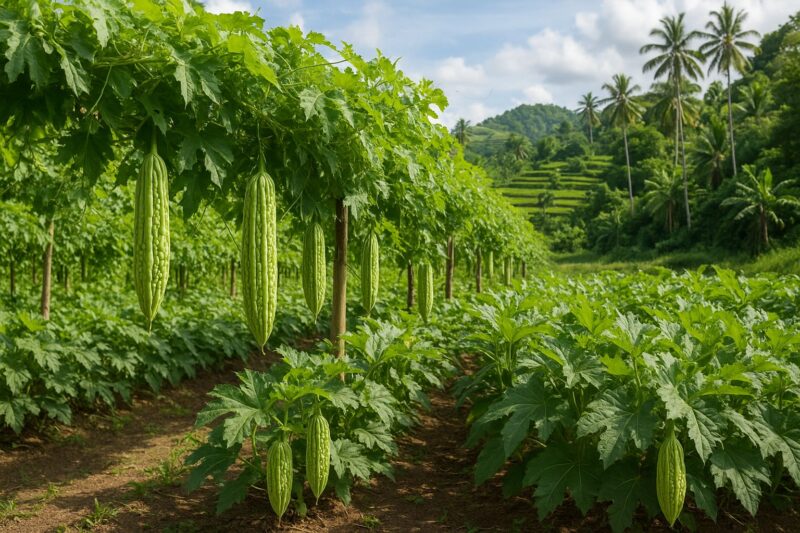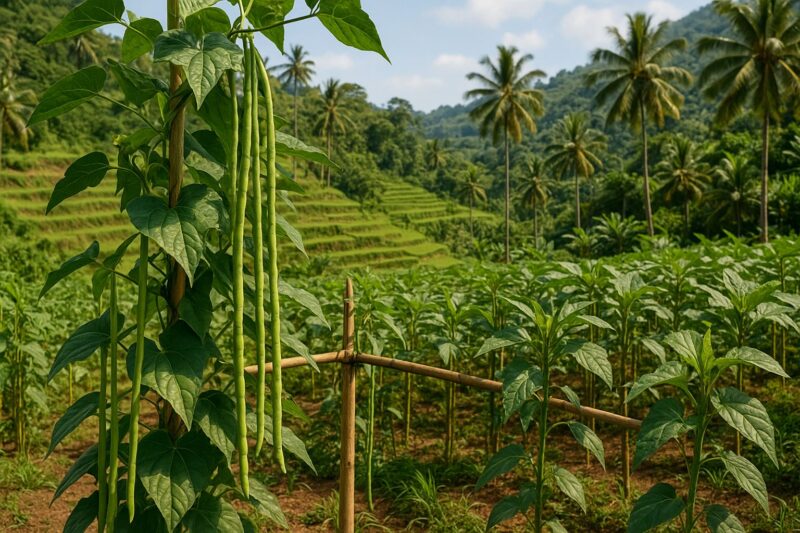Chayote—sayote—adds a crisp, mild sweetness to many Filipino dishes, from tinolang manok in Quezon to ginisang sayote in Negros. Though often treated like a squash, sayote is actually a climbing gourd that, with simple supports and routine care, can produce bumper harvests year after year. After tending vines in Bulacan and gathering tips from growers in Laguna’s lowlands and upland plots in Bukidnon, I’ve refined a straightforward method to grow sayote almost anywhere in the Philippines. Here’s what works.
Select the right planting material. Unlike seeds, chayote comes from whole fruits. Choose firm, blemish-free sayote weighing at least 300 grams. In Bulacan, I look for fruits with healthy, plump eyes at the stem end—those are your sprouting points. Upland growers sometimes pre-sprout chayote in damp sand for two weeks, but I’ve found direct planting of fresh fruits works well when timed right.
Soil preparation sets the foundation. Chayote thrives in rich, loose loam that drains easily. In clay-heavy plots, I incorporate two wheelbarrows of homemade compost and a generous handful of rice hull ash per ten square meters. Coastal sandy soils—common in Iloilo and Cebu—benefit from added coconut coir or well-rotted manure to retain moisture. Aim for pH 6.0–6.8; if your soil tests more acidic, a light application of dolomite lime balances it.
Timing matters. Plant sayote at the start of the rainy season—June to July in lowland provinces—so fruits establish before heavy downpours. In cooler uplands, wait until after October’s misty nights to avoid rot. In Bulacan, I plant fresh fruits on gentle mounds, planting them on their side with the sprout-eyes facing up and spacing mounds three meters apart.
Provide sturdy support. Chayote vines climb rapidly—up to two meters in a few months. I build A-frame trellises from bamboo poles or repurpose metal pipe arches spaced every three meters. As shoots grow, I guide them onto the frame, weaving tendrils gently to encourage upward growth. Vertical vines dry faster after rains and free ground space for weeding or intercropping with low beans or lettuce.
Feeding combines routine with observation. At planting, I mix a handful of bone meal into each mound for early root development. When shoots reach one meter—about six weeks later—I side-dress with decomposed chicken manure or an organic balanced fertilizer around the drip line. Too much nitrogen can produce foliage at the expense of flowers, so I watch vine density and pause feeding if growth becomes overly lush.
Water management is key. Chayote needs consistent moisture during vine growth and fruit set but hates standing water at the base. I water deeply each morning, letting soil dry slightly by afternoon. In raised beds or containers—common in urban settings—I water daily during dry spells, checking by feel: soil should crumble loosely, not clump.
Pest and disease checks are straightforward. Fruit flies can lay eggs in young sayote; I cover developing clusters with small paper bags once fruits are marble-sized. Aphids and mealybugs hide in leaf axils—weekly inspections and a gentle neem oil spray keep them under control. Powdery mildew may appear under dense foliage; pruning crowded shoots improves air circulation and halts its spread.
Harvest begins eight to ten months after planting, when fruits reach tennis-ball size and their skin changes from bright green to a slightly duller hue. I twist each fruit gently to detach it, leaving a short stem to prevent scanning. Frequent picking—every week once fruits start—to prevents over-maturation and encourages new flowers.
One season in Bulacan, after an unexpected series of evening storms, several vines collapsed. By reinforcing trellises with extra guy wires and pruning damaged shoots, the plants rallied to produce a late season flush—proof that quick interventions can salvage a crop.
Whether you grow sprawling vines in open fields or maintain compact trellises in backyard gardens, mastering soil health, timing, support structures, balanced feeding, consistent moisture, and simple pest checks will bring you crisp, productive chayote vines across the Philippines. It may take patience—nearly a year to full harvest—but steady pruning and care yield fresh, tender fruits for months to come.
I’m open for consulting and speaking opportunities on sustainable vegetable production and agribusiness nationwide. Let’s grow together.
#Sayote #Chayote #PhilippineFarming #SustainableAgriculture #UrbanGardening #ConsultingAvailable #SpeakingOpportunities




